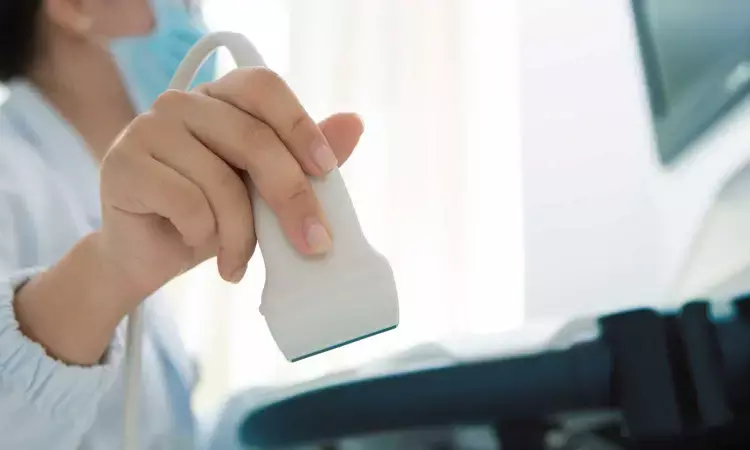- Home
- Medical news & Guidelines
- Anesthesiology
- Cardiology and CTVS
- Critical Care
- Dentistry
- Dermatology
- Diabetes and Endocrinology
- ENT
- Gastroenterology
- Medicine
- Nephrology
- Neurology
- Obstretics-Gynaecology
- Oncology
- Ophthalmology
- Orthopaedics
- Pediatrics-Neonatology
- Psychiatry
- Pulmonology
- Radiology
- Surgery
- Urology
- Laboratory Medicine
- Diet
- Nursing
- Paramedical
- Physiotherapy
- Health news
- Fact Check
- Bone Health Fact Check
- Brain Health Fact Check
- Cancer Related Fact Check
- Child Care Fact Check
- Dental and oral health fact check
- Diabetes and metabolic health fact check
- Diet and Nutrition Fact Check
- Eye and ENT Care Fact Check
- Fitness fact check
- Gut health fact check
- Heart health fact check
- Kidney health fact check
- Medical education fact check
- Men's health fact check
- Respiratory fact check
- Skin and hair care fact check
- Vaccine and Immunization fact check
- Women's health fact check
- AYUSH
- State News
- Andaman and Nicobar Islands
- Andhra Pradesh
- Arunachal Pradesh
- Assam
- Bihar
- Chandigarh
- Chattisgarh
- Dadra and Nagar Haveli
- Daman and Diu
- Delhi
- Goa
- Gujarat
- Haryana
- Himachal Pradesh
- Jammu & Kashmir
- Jharkhand
- Karnataka
- Kerala
- Ladakh
- Lakshadweep
- Madhya Pradesh
- Maharashtra
- Manipur
- Meghalaya
- Mizoram
- Nagaland
- Odisha
- Puducherry
- Punjab
- Rajasthan
- Sikkim
- Tamil Nadu
- Telangana
- Tripura
- Uttar Pradesh
- Uttrakhand
- West Bengal
- Medical Education
- Industry
Bedside ultrasound useful diagnostic modality for forearm fracture in children

Researchers have found in a new study that Bedside ultrasound is a useful diagnostic modality for forearm fracture in children.Portable ultrasound devices may be useful alternative to x-ray machines for diagnosing forearm fractures in children in a move that could alleviate waiting times for families in hospital emergency departments (ED).
Griffith University researchers Professor Robert Ware from the Menzies Health Institute Queensland and Senior Lecturer Peter Snelling from the School of Medicine and Dentistry compared functional outcomes in children given an ultrasound and those who received an x-ray on a suspected distal forearm fracture.
Dr Snelling said the ultrasounds were performed by nurses, physiotherapists and emergency physicians at four south-east Queensland hospitals.
"They treated 270 children, aged between five and 15 years, during the randomised trial, which included a check-up 28 days later and another check-in at eight weeks,” Dr Snelling said.
“The findings show the majority of children had similar recoveries and returned to full physical function.”
Less than one-third of children who were given an ultrasound needed a follow-up x-ray and care at an orthopaedic clinic.
Those who didn’t have a buckle fracture or fractured arm were discharged from hospital without the need for further imaging.
Professor Ware said children who had an ultrasound initially had fewer x-rays, and shorter stays in the ED.
“Families were also more satisfied with the treatment they received,” he said.
“The results are promising and have wider implications beyond in hospital diagnosis and follow up care.
“By using a bedside ultrasound, this frees up the x-ray machine for patients who really need it and can potentially be a cost-cutting measure for hospitals as they reduce the number of x-rays without comprising the safety of patients.
“It also would be extremely beneficial in rural or remote areas eliminating the need for children and their families to travel to a larger hospital for an x-ray.”
Dr David Bade, Queensland Children’s Hospital Director of Orthopaedic Surgery said: “This research will allow us to achieve a more efficient diagnostic and treatment service for these common injuries, not only in big tertiary hospitals but possibly also in smaller regional and even rural centres, where there can be a delay for X-ray diagnosis.
“Collaborative research such as this, allows us to tackle such health inequality in a small but meaningful way.”
Professor Hugh Grantham ASM, Emergency Medicine Foundation Chair said: “This is a great example of emergency medicine research at its best: identifying practical, translatable interventions that provide immediate positive outcomes for patients, and help relieve the burden on our hospitals and health system.”
Reference:
Peter J. Snelling, Philip Jones, M.Biostat., David Bade, Randy Bindra, Joshua Byrnes, Michelle Davison, Shane George, Mark Moore, Gerben Keijzers, and Robert S. Ware, N Engl J Med 2023; 388:2049-2057, DOI: 10.1056/NEJMoa2213883.
Dr Kamal Kant Kohli-MBBS, DTCD- a chest specialist with more than 30 years of practice and a flair for writing clinical articles, Dr Kamal Kant Kohli joined Medical Dialogues as a Chief Editor of Medical News. Besides writing articles, as an editor, he proofreads and verifies all the medical content published on Medical Dialogues including those coming from journals, studies,medical conferences,guidelines etc. Email: drkohli@medicaldialogues.in. Contact no. 011-43720751


